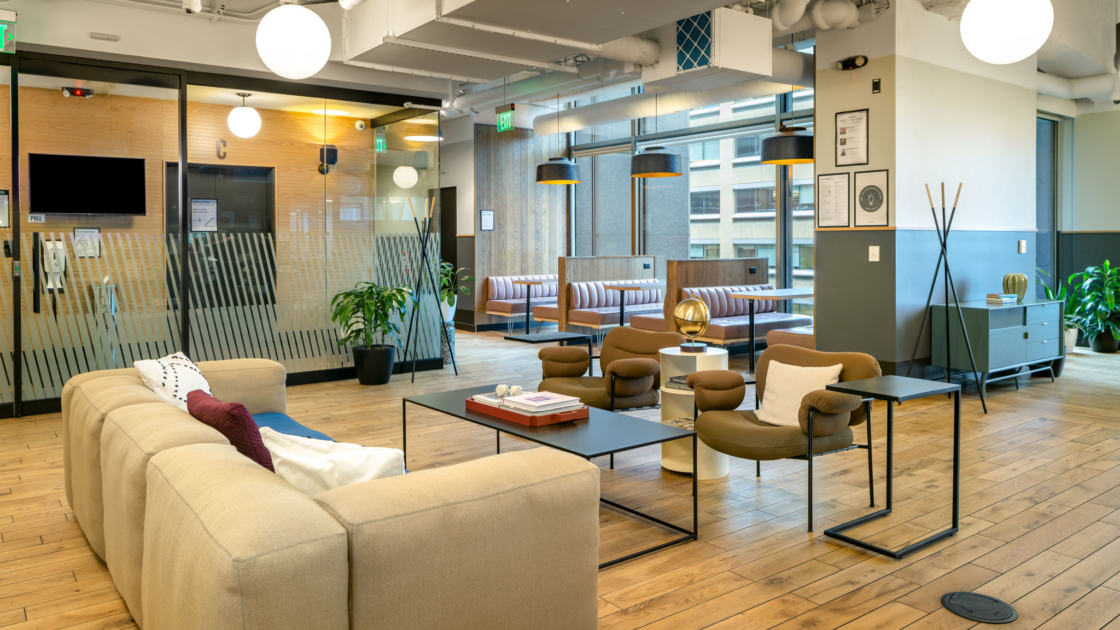As vaccination rates rise and infection rates fall (then rise, then fall again), many companies that transitioned to fully remote work in the beginning of the pandemic are asking employees to return to the office for a portion of the week.
Employers want to bring their workers back to the office because being in person encourages collaboration, and because the right flexible workspace can help boost morale. On the other hand, many employees see the benefits of working from home: time and money saved by not having to commute, easier childcare management.
One thing everyone can agree on: Hybrid work models—which capture the camaraderie and collaboration of in-office work and the convenience and flexibility of remote work—are here to stay. Here are some examples of the hybrid work policies that different companies are implementing.
Microsoft
Throughout the pandemic, Microsoft followed a strategy for a hybrid workplace with six stages: closed, mandatory work from home, work from home strongly encouraged, soft open, open with restrictions, and open. Individual worksites will factor the community vaccination rates and COVID-19 levels to determine whether to fully open. As offices begin to open and the company moves to flexible work, employees can work from home up to 50% of the time (or more with manager approval). Employees will also have flexibility in their work schedule and location. Managers have the authority to address requests like different work-from-home schedules, domestic or international relocations, and more flexible schedules. Employees have 30 days from February 28, 2022, to adapt to their new schedules.
Though Twitter reopened offices on March 15, it’s made remote work a permanent part of its workplace strategy—allowing employees to work from anywhere. Employees also have the option to work in offices, including the office closest to where they live.
Meta
Mark Zuckerberg has said he expects 50 percent of employees to work remotely over the next five to 10 years. Having dispersed teams requires proactive planning and communication, and Meta has already outlined tips for its remote workers and managers to facilitate this process. The company adopted remote work for its employees on June 15, 2021, and is currently recruiting for remote roles in the US, Canada, and Europe. Existing staff can apply for the ability to work remotely if they so desire, and those who wish to work in offices as they reopen can do so.
American Express
To foster growth within teams, American Express introduced Amex Flex last October with three work designations: hybrid, on-site, and fully remote. Most roles are hybrid, with employees working in the office from one to three days per week and the rest at home. On-site employees with responsibilities that can only be performed in person are in the office four to five days per week, and those who are fully virtual work remotely every day. Also, hybrid and fully remote employees can work from any location for four weeks each year, with 15 of those days in an international location.
Apple
The technology giant plans to phase its employees back into the office, starting with one day per week on April 11. Then three weeks later, it will move to two days per week, and on May 23, employees will be required in the office on Mondays, Tuesdays, and Thursdays. Employees will also be able to work from home for an additional month in the year as part of its hybrid pilot program.
Goldman Sachs
Goldman Sachs asked its staff to return to the office five days a week in February, in order to foster in-person collaboration. Management noted they would make exceptions for some employees who are at higher risk of COVID-19 or who live with others at higher risk.
Amazon
Recognizing that there’s no one solution that fits every employee or team, Amazon CEO Andy Jassy has suggested to staff that they try to work in the office at least three days a week. For corporate roles, individual team directors have the discretion to determine whether three days in the office works best for that team. Employees do need to reside close enough to the office so that they can travel there within a day’s notice.

JPMorgan Chase & Co.
International investment bank JPMorgan Chase is adopting a similar approach as other companies, as outlined in its 2021 shareholder letter. Employees performing jobs on-site will be required to work in person. Depending on the job type, about 40 percent of employees are able to work a combination of days on-site and remote each week, and about 10 percent of employees have the option to work fully remote.
Beginning in May 2021, Google employees have had hybrid workweeks, with two days remote and three days in the office, to encourage collaboration with teams. Employees wishing to work from another location can apply to do so, with approvals dependent on whether the alternate location has the infrastructure to support that employee’s work. Depending on the team and role, some employees are able to work fully remote. Google also allows employees to work from anywhere for four weeks each year, limit internal meetings when necessary, and implement reset days to help staff avoid burnout.
UBS
This bank is taking a different approach than its Wall Street peers with its Virtual Worker Framework. Eligible UBS employees have the opportunity to work 100 percent remotely. The bank is introducing this program in phases, starting with certain Global Wealth Management roles. Currently, about two-thirds of UBS employees enjoy a hybrid work schedule where they can work from home up to three days a week.
Bank of America
To encourage in-person collaboration and mentoring of junior staff, Bank of America will bring employees back to the office for five days a week starting on June 1. The bank is taking a phased approach and will give employees 30 days’ notice for their impending return to the office.
The social media company allows its employees to work from wherever they’d like. Pinterest’s work structure, referred to as PinFlex, permits employees to work from their homes, the office, or a remote hub. When there’s a need for in-person collaboration, Pinterest will pay travel expenses for those employees who do not live within a reasonable commuting distance to the office. While the company embraces flexibility for its employees, Pinterest does require that its workers visit an office at least once a year.
Andrea Murad is a writer with a passion for storytelling. She covers business, finance, and technology, and her work can be found on BBC, The Real Deal, and in Global Finance magazine.
Rethinking your workspace?









